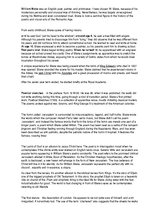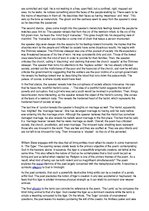-
William Blake
William Blake was an English poet, painter, and printmaker. I have chosen W. Blake, because of his mysterious personality and unusual way of thinking. Nevertheless, he was largely unrecognised during his lifetime and even considered mad, Blake is now a seminal figure in the history of the poetry and visual arts of the Romantic Age.
From early childhood, Blake spoke of having visions—
at 4 he saw God "put his head to the window"; around age 9, he saw a tree filled with angels. Although his parents tried to discourage him from "lying," they did observe that he was different from his peers and did not force him to attend conventional school. He learned to read and write at home. At age 10, Blake expressed a wish to become a painter, so his parents sent him to drawing school. Two years later, Blake began writing poetry. When he turned 14, he apprenticed with an engraver because art school proved too costly. One of Blake's assignments as apprentice was to sketch the tombs at Westminster Abbey, exposing him to a variety of Gothic styles from which he would draw inspiration throughout his career.
A unique experience for Blake was being present when the tomb of King Edward I who died in 1307 was opened. Blake recorded the scene for his master. Blake claimed that he experienced visions in the Abbey. He saw Christ with his Apostles and a great procession of monks and priests, and heard their chant.
…
“Far and away the greatest artist Britain has ever produced“ (21st-century critic Jonathan Jones about W. Blake) William Blake was an English poet, painter, and printmaker. I have chosen W. Blake, because of his mysterious personality and unusual way of thinking. Nevertheless, he was largely unrecognised during his lifetime and even considered mad, Blake is now a seminal figure in the history of the poetry and visual arts of the Romantic Age.
















